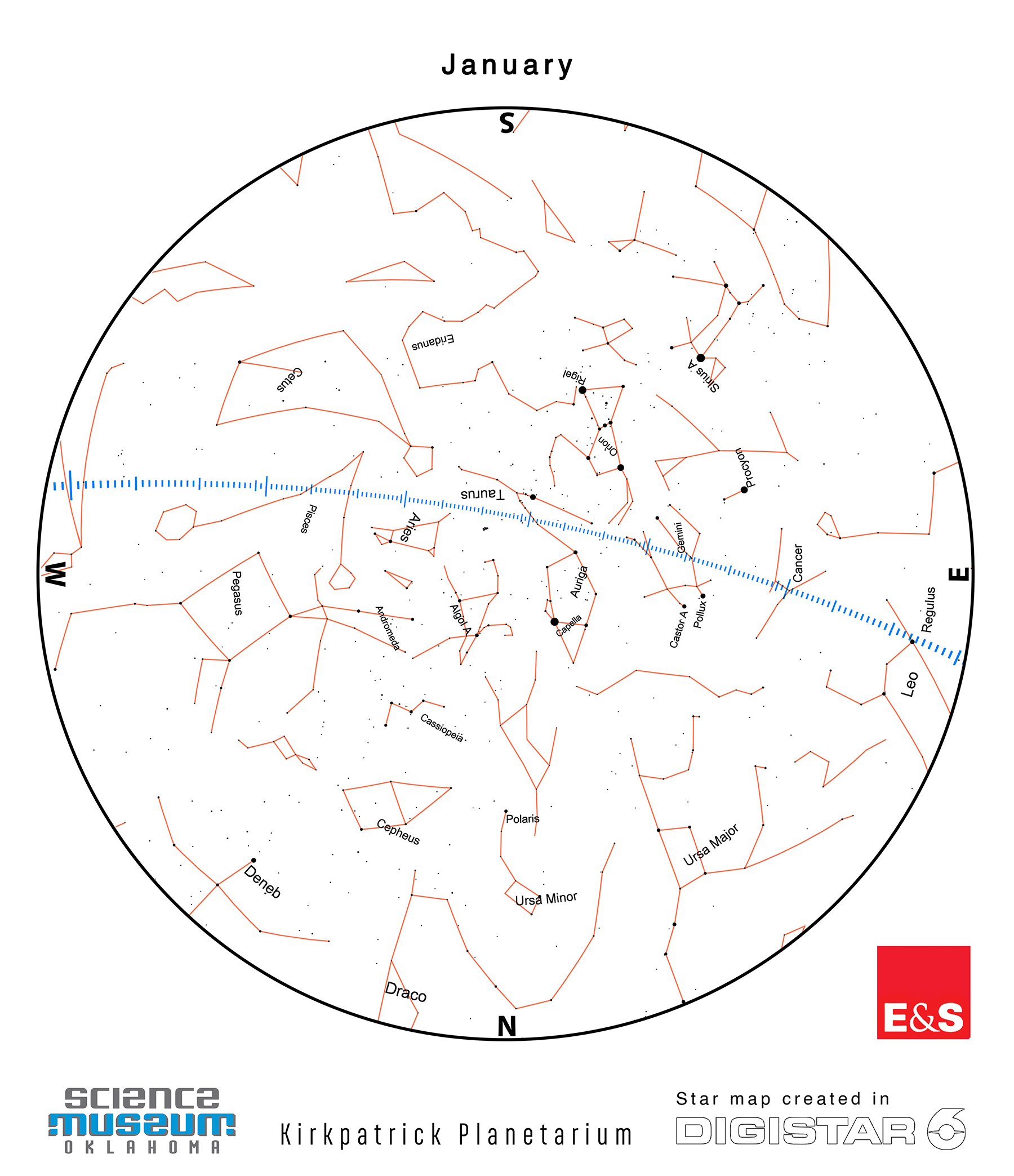Red Dirt Astronomy: Skies & Space for January
January 1, 2023
Planets
Mercury – The beginning of a new year finds the innermost planet in the evening sky after sunset, but moving quickly westward toward the sun. It will disappear in the early days of the month, lost in the suns setting glow. It will appear again in the morning sky by mid-month. By the 30th, the planet will reach its greatest elongation from the sun, rising well before sunrise in the east shining brightly.
Venus- Venus begins 2023 in the southwest in the twilight of the setting sun. It will be close to Saturn in the sky on the 22nd and the duo joined by the moon 12 hours later.
Mars – Still bright after opposition in December, Mars shines bright in the east after sunset and remains well placed for observing throughout the night. Still in Taurus, the planet will be near both the Pleiades and Hyades star clusters. But the planets brightness will greatly outshine any on the stars in those clusters.
Jupiter – Looking due south at sunset, Jupiter dominates the evening sky. The moon will be close to the giant among planets on the 25th and 26th.
Saturn- The ringed planet will complete the seven “wanderers” in the evening sky early in the month. Shining brightly in Capricorn, Saturn will be fairly close the Venus, but greatly out shown by the brilliance of Venus.
Uranus- The distant gas giant Uranus remains in Aries this month and is also well placed for Telescopic observation. It is the sixth of the planets visible in the evening sky this month.
Neptune- Rounding out the list of the seven ‘wanderers” for the month is the most distant planet Neptune. It remains in Aquarius and is visible only by telescope.
Sky & Space Anniversary Events for January 2023
Jan. 1: Uranus is close to the moon
Jan: 3: Mars is close to the moon
Jan. 4: Earth reaches its closest distance from the sun, perihelion.
Jan. 4: Quadrantid Meteor Shower (see below)
Jan.6: Full moon
Jan. 12: STS 81, Space Shuttle Atlantis launched (1997)
Jan. 15: Last Quarter moon
Jan. 21: New moon
Jan. 22: Venus near the Saturn
Jan. 22: STS 42, Space Shuttle Discovery launched, equipped with the International Microgravity Laboratory to study the effects of weightlessness on the human body. (1992)
Jan. 26: Jupiter near the moon
Jan. 29: Uranus near the moon
Jan. 31: Mars near the moon
Object of the Month: Quadrantid Meteors
One of the lesser known meteor showers, the Quadrantids will reach their maximum around January 4. Originating in the constellation Bootes, the shower will be active each night in the western sky until the radiant sets at 6:42 p.m. However, it will appear again in the eastern sky after midnight, producing the greatest display just before dawn.
The Earth’s rotation will turn Oklahoma City facing directly into the shower, maximizing the number of events as they appear to fall directly down upon the observer. This will produce long lived meteors which will traverse a wide portion of the sky.
At its peak, the shower could produce 120 meteors/hour… seen from a perfectly dark sky. Unfortunately, the full moon will hinder any observations of the Quadrantrids this year.


